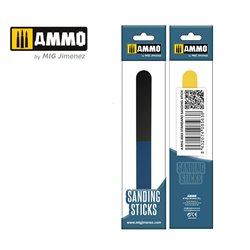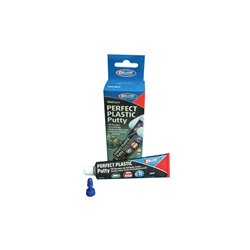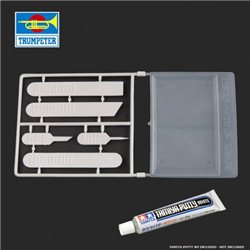There are a number of different options for attaching figures such as a horse and rider to a layout. Perhaps the...
No products
Product successfully added to your shopping cart
There are 0 items in your cart. There is 1 item in your cart.
Search Tips
What are ejector pin marks and how can I remove them ?
Ejector pin marks are small depressions or marks left on a model part after it has been ejected from the mould during the manufacturing process. These marks are generally circular and are caused by the ejector pins, which are used to push the part out of the mould.
Most manufacturers try to hide ejector pin marks on the inside of parts or on other locations where they won't be so obvious but this is not always possible. Removing ejector pin marks can be done using a few different methods, depending on the material and complexity of the part. Here are a few techniques that can be effective:
- Sanding : one of the simplest methods is to use sandpaper or a sanding stick to carefully sand down the ejector pin marks. Starting with a coarse grit sandpaper and then gradually working up to a finer grit to achieve a smooth finish. Be careful not to sand too aggressively, as this could damage the surrounding area.
- Filling : for larger or deeper ejector pin marks, a filler material could be used to fill in the depression. There are various types of fillers available, such as putty or epoxy, these can be applied to the mark and then sanded down once dry. This method is particularly useful for plastic or resin models.
- Heat and pressure : in some cases, applying heat and pressure to the ejector pin marks can help to remove them. This can be done by using a heated tool, such as a soldering iron or a heated metal rod, to carefully press against the mark. The heat softens the plastic, allowing it to be reshaped and smoothed out.
- Repairs and touch-ups : if the ejector pin marks cannot be completely removed, it may be possible to use other techniques to hide or camouflage them. This can include using paint or weathering techniques to blend the marks into the surrounding area or using decals or additional detailing to distract from the marks.
Remember to always test any method on a scrap piece or inconspicuous area before applying it to a model. This will help determine the best approach and avoid any potential damage.
Click here to receive the tips weekly in your mailbox. You can unsubscribe at any time.










